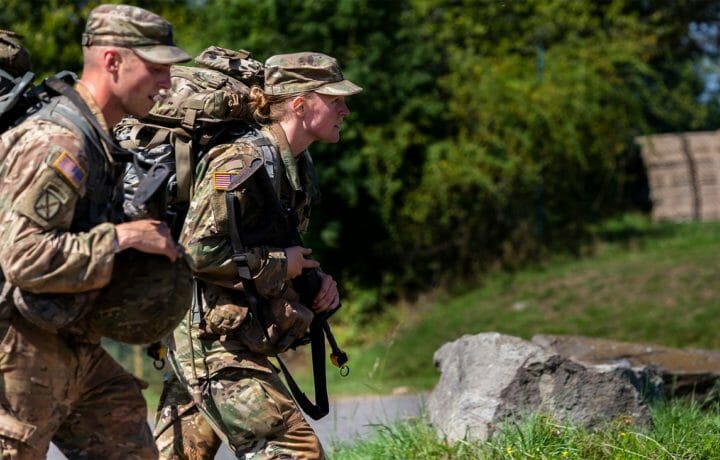Earlier this month, the United States Navy’s fleet size was reported to be the smallest it has been since the First World War. Adding to the woes is the fact that Washington lacks the shipyards to build and maintain a sizeable fleet, and the problem is almost certainly going to get worse before it gets better. It isn’t just ships that are a problem, as the U.S. Navy also has failed to meet its recruiting goals.
In addition, as recently reported, the United States Air Force has had to offer retention incentives to pilots as it faces a continue shortage of aviators as well as drone operators. Nearly all of the branches of the United States military are failing to reach their recruiting goals – especially among Generation Z. Enlistment has hit its lowest level since 1941, just before the United States entered the Second World War.
The news comes as Congress passed the $886 billion annual defense bill that saw total active-duty troop numbers fall to 1,284,500 from 1.39 million, reported in 2023. The issue is so great that officials within the Department of Defense (DoD) have suggested there should be a “national call to service.”
Global Threats Remain
Lawmakers have signaled the alarm that a reduced force size could put the nation at risk.
“We need a larger force, in every branch,” Sen. Roger Wicker (R-Miss.) ranking member of the Senate Armed Services Committee, told reporters according to the MilitaryTimes earlier this month. “But the reality of recruiting is driving the numbers, not what we actually need.”
With the exception of the United States Space Force – the sixth and newest branch of the U.S. military, which was only stood up in 2019 – all of the Pentagon’s service branches have seen significant cuts in active-duty numbers since the end of 2020.
It was reported that the cuts within the U.S. Army have been the deepest. The Fiscal Year 2024 (FY24) National Defense Authorization Act (NDAA) calls for a force of 445,000 active-duty soldiers, down more than 40,000 (8.4%) in just three years.
The Navy and Air Force have failed to meet recruiting goals for 2023, while the Marine Corps was able to hit its goals is still poised to be at just 8,900 active-duty service members smaller than in fiscal 2021, a 4.9% reduction. The Air Force is set to be down 13,475 airmen in total, or 4% lower, while the Navy is expected to have 10,000 fewer sailors, down 2.9%.
Ashish Vazirani, the deputy under secretary of defense for personnel and readiness at the DoD, reported to the House Armed Services Committee that the respective services missed 2023 recruitment targets by a combined 41,000 personnel.
“That number understates the challenge before us as the services lowered end-strength goals in recent years, in part because of the difficult recruiting environment,” Vazirani told the committee.
Senator lawmakers had initially proposed 11,000 more personnel in the early draft of the bill, while House members voted for almost 21,000 more. When the service failed to meet the goals, the end strength aims for next year were also reduced in the final compromise legislation for the FY24 NDAA.
Service officials have already warned that they expect to face difficulty meeting their recruiting goals for next year, even with the lower targets.
Attracting Gen-Z to Increase Active Duty Strength?
Simply put, it seems that young people have almost no interest in military service even as the services have attempted to attract Gen-Z via video games while relaxing guidelines on tattoos and past drug use.
However, Vazirani has warned that part of the problem is that the youth doesn’t know enough about the military, or even the opportunities the services can provide for future careers.
“This has led to a disconnect between the military and a large share of society,” Vazirani added. “Youth of today are not saying no to what the military has to offer, they simply don’t know much about military service.”
He further suggested that while the picture of the current recruiting environment is acutely difficult, the Pentagon and the military services are working together to resolve issues, improve processes, and expand awareness of the many opportunities military service offers.
That includes the national call to service.
“Over the last 50 years the all-volunteer force has proven itself to be the best way to maintain a force capable of defending our nation,” Vazirani continued. “And with our combined efforts I am confident we will remain as such for the foreseeable future.”




